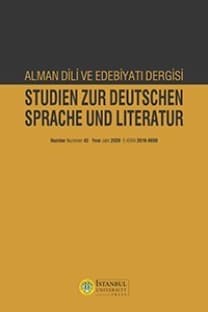How Physicians and Medical Knowledge is Assessed in a Health Forum
Web 2.0 is often referred to as ‘social’ or participatory. A genre of Web 2.0 to which this certainly applies is forums. Every user can take part in communication exchange and publish his or her knowledge, experience and his or her very own opinions. This study focuses on the genre of forums. I qualitatively (and according to discourse- or content-analytical criteria) analyzed the special features of such lay communication in the context of a specific forum. In terms of content, I am referring to a forum from Germany that deals with health issues. The aim was to examine how medical professionals and medical knowledge are valued. Since it is difficult to access exact numbers of users in the context of such a forum, I selected a specific website that appears in the list of the most visited websites, and that already has a special probability of being accessed due to its URL (hence the name): www.gesundheit.de (according to the legal notice, this forum is operated by Alliance Healthcare Germany, based in Frankfurt am Main). The topics were selected from posts published between December 2018 and April 2019. The contributions were transferred unchanged, i.e. including the orthographic and grammatical errors found in the original
Keywords:
Forum communications, Health communications, Internet communications, Layperson communications Medical communications,
___
- Angermüller, J., Bunzmann, K. & Nonhoff, M. (Hrsg.) (2001). Diskursanalyse: Theorien, Methoden, Anwendungen. Hamburg: Argument-Verlag
- Alexa (2019). Top Sites in Germany. URL: https://www.alexa.com/topsites/countries/DE.
- Bertelsmann-Stiftung (Ed.) (2018). Das Internet: Auch Ihr Ratgeber für Gesundheitsfragen? Bevölkerungsumfrage zur Suche von Gesundheitsinformationen im Internet und zur Reaktion der Ärzte. Gütersloh 2018, Abgerufen am 17. Januar 2020. URL: https://www.bertelsmann-stiftung.de/fileadmin/files/BSt/Publikationen/ GrauePublikationen/VV_Studie_Das-Internet-auch-Ihr-Ratgeber_Befragung.pdf.
- Bitkom (2011). Das Internet wird zum Gesundheitsratgeber. Abgerufen am 17. Januar 2020. URL: http://www. bitkom.org/de/markt_statistik/64026_69111.aspx.
- Bromme, R., Jucks, R. & Runde, A. (2005). Barriers and biases in computer-mediated expert-laypersoncommunication. In R. Bromme, F. W. Hesse & H. Spada (Eds.) (2005). Barriers and Biases in Computer-Mediated Knowledge Communication. And How They May Be Overcome (S. 89-118). Dordrecht: Kluwer.
- Busch, A. (2015). Medizindiskurse: Mediale Räume der Experten-Laien-Kommunikation. In A. Busch & T. SpranzFogasy (Eds.). Handbuch Sprache in der Medizin. (S. 369-388). Berlin, New York: de Gruyter.
- Dilthey, W. (1900/1964). Die Entstehung der Hermeneutik. In Dilthey, W (1964), Gesammelte Schriften, Band V. (S. 317-331) (Original: 1900). Göttingen: Vandenhoek & Ruprecht.
- Ehrhardt, C. (2011). Höflichkeitsbegriffe – am Beispiel von Höflichkeit und Höflichkeitsbewusstsein in Internetforen. In C. Ehrhardt, E. Neuland & H. Yamashita (Hgg.), Sprachliche Höflichkeit zwischen Etikette und kommunikativer Kompetenz (S. 27-44). Frankfurt/Main: Lang.
- Ehrhardt, C. (2014). Politeness and face work in German forum communication. In K. Bedijs, G. Held, & C. Maaß (Hrsg.), Face Work and Social Media. Münster: LIT.
- Gadamer, H.-G. (1960). Wahrheit und Methode. Grundzüge einer philosophischen Hermeneutik. Tübingen: Mohr Siebeck Verlag.
- Gillies, J. & Cailliau, R. (2000). How the Web Was Born: The Story of the World Wide Web. Oxford, New York: Oxford University Press.
- Kaltenborn, K.-F. (2001). Medizin- und gesundheitlicher Wissenstransfer durch Medien. In K. Hurrelmann & A. Leppin (Eds.). Moderne Gesundheitskommunikation. Vom Aufklärungsgespräch zur E-Health. (S. 36-69). Bern: Huber.
- Kassner, K. (2003). Soziale Deutungsmuster – über aktuelle Ansätze zur Erforschung kollektiver Sinnzusammenhänge. In S. Geideck & W.-A. Liebert (Eds.). Sinnformeln. Linguistische und soziologische Analysen von Leitbildern, Metaphern und anderen kollektiven Orientierungsmustern. (pp. 37–57). Berlin. New York: de Gruyter.
- Kleinke, S. (2015). Internetforen: Laiendiskurs Gesundheit. In A. Busch & T. Spranz-Fogasy (Eds.). Handbuch Sprache in der Medizin. (S. 405-422). Berlin, New York: de Gruyter.
- Kristiansen, S. & Bonfadelli, H. (2013). E-Health: Gesundheit im Internet. In C. Rossmann & M. Hastall (Eds.). Medien und Gesundheitskommunikation. Befunde, Entwicklungen, Herausforderungen. (S. 237-255). Baden-Baden: Nomos.
- Kuckartz, Udo (2016). Qualitative Inhaltsanalyse. Methoden, Praxis, Computerunterstützung. 3. Auflage. Weinheim, Basel: Beltz Juventa.
- Lippmann, W. (1922). Public Opinion. New York: Harcourt, Brace & Co.
- Myers, G. (2015). Social Media and professional Practice in Medical Twitter. In M. Gotti, S. Maci & M. Sala (Eds.). Insights into Medical Communication. (S. 51-69). Bern: Lang.
- O’Reilly, T. (September 30., 2005). What Is Web 2.0. Abgerufen am 17. Januar 2020. URL: https://www.oreilly.com/ pub/a/web2/archive/what-is-web-20.html.
- Rentel, N (2015). Sprachnormen, Community Building und Identity Management in der deutschen und französischen Forenkommunikation. Positiv wertende Kommentare in Diskussionsforen zu Schwangerschaft und Geburt. Bulletin VALS-ASLA, tome 2, 197-214.
- Statista (2017). Volumen des ehealth-Marktes. Hamburg: Statistica. Abgerufen am 17. Januar 2020. URL: statistic_ id712698_volumen-des-ehealth-merktes-weltweit-bis-2020-pdf.
- Statista (2019). Mediennutzung in Europa. Hamburg: Statistica. Abgerufen am 17. Januar 2020. URL: https://de. statista.com/statistik/studie/id/24564/dokument/mediennutzung-in-europa-statista-dossier. www.gesundheit.de (2019). Abgerufen am 17. Januar 2020. Frankfurt: Alliance Healthcare Deutschland.
- Başlangıç: 1954
- Yayıncı: İstanbul Üniversitesi
Sayıdaki Diğer Makaleler
Literary Concepts of Masculinity in Christian Kracht’s Imperium and Steffen Kopetzyk’s Risiko
Multimodality in Socio-cultural Contexts: To Talk with Pictures, to Understand Pictures
Valeria CHERNYAVSKAYA, Ludmila V. KULIKOVA
Ayşe ARSLAN ÇAVUŞOĞLU, Fatih TEPEBAŞILI
Ayşe ARSLAN ÇAVUŞOĞLU, Fatih TEPEBAŞILI
How Physicians and Medical Knowledge is Assessed in a Health Forum
